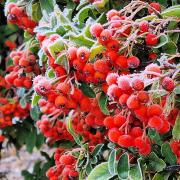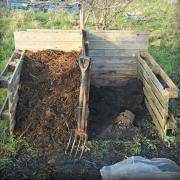With days getting shorter and nights getting longer, it’s time to bid farewell to the warm embrace of summer as there’s a new player waiting in the wings: autumn! However, this is a season with much to smile about. Autumnal colours of gold, fiery reds and burnt oranges encourage us to pull on our boots and go for long walks, kicking up fallen leaves as we go. Squashes and pumpkins come to the forefront, fulfilling their annual tradition of being carved, decorated and displayed in a ghoulish night of celebration. Whilst rich harvests reward us with warming soups and cosy suppers for those long, dark nights ahead.
Although the growing season might be waning, this isn’t the moment to close the garden gate and turn away from your green spaces, waiting for winter to pass. Instead, it’s time to think about how you want your garden to greet you next spring. Whether it’s the delicate uncurling of the first snowdrop or the gentle sway of daffodils sounding in the new season with their floral trumpets, spring bulbs will guarantee to chase away those winter blues. Alliums, tulips, crocuses, daffodils, snowdrops and hyacinths all fall under this banner, giving you blooms from January through to May.

Chosen bulbs should be firm, smooth and free of blemishes or signs of mould. They should be planted three times the bulb's height and two bulbs apart. Do not force them into the ground as you can damage the root plate and hamper growth. When planting, ensure the bulb tip is facing skyward. By sinking them at this depth, not only do you help prevent the fully grown flower from rocking and becoming unstable, but you're also protecting it from the rigours of winter.

Planting large swathes of bulbs can result in a breath-taking display. Plant them alongside paths and patios and it will highlight and guide you through a particular area. For more of a natural-looking planting scheme, simply scatter them across the growing area and plant bulbs where they fall.
If you have limited space, consider growing bulbs in pots, window boxes and hanging baskets. Use a good multi-purpose compost and the chosen container should have several holes for drainage. Placing crocks at the bottom of your pot will also keep bulbs from sitting in water. Containers can be placed on the patio, across a window ledge or as a floral welcome to visitors who come to your front door. When the weather’s too cold to go out, you can still enjoy their colours from the warmth of your home as you look through the window.

Once bulbs have finished flowering, don’t be tempted to cut away the fading foliage. Bulbs need this to harness the sun’s rays, energising them for next year’s display, so let the plant recede naturally. If you can’t wait, lift the bulbs and surrounding soil, pop them into an empty pot and place them somewhere they can continue to die back. The bulbs will happily sit there until autumn, when you’ll re-plant them into a position of your choice.
Fill your pots, border and beds now with a range of spring bulbs, and next year, you could be enjoying a blooming marvellous spring.

After a summer of constant use, lawns will need your attention. Re-lay any bare patches with new turf or re-sow seeds directly into the soil. Scarify, aerate and apply a dressing to the lawn. Keep edging in check and remove any fallen foliage. Any leaf build-up can harbour pests, stop light getting to your lawn, and create a ‘browning off’ effect.
Exhausted and gone-to-seed summer bedding plants have had their moment in the sun. Therefore, remove, clear weeds and freshen the area with a layer of compost. For winter colour, consider planting cyclamen, polyanthus and primrose. Whether it’s flower beds, borders, pots, containers or hanging baskets, these plants can fill your winter months with colour.
To increase your stock of summer-flowering perennials, lift, divide and re-plant your plants. Water in and apply a thick mulch around the plant to protect them for the colder months ahead. Don’t cover plants over, as this can cause them to rot.
For large floral displays next year, try sowing poppy, marigold and aquilegia. Sow into seed trays or small pots, cover over lightly with soil and water. These can be kept in a greenhouse, cold frame or on a window seal. Check them regularly and don’t let the soil dry out.
Prevent your greenhouse from turning into a house of horrors this month and give glass a thorough clean with warm soapy water. Clear away pots, trays and sweep the floor clean. The warmth of an unkept greenhouse is a lure for hungry pests, with the sole desire to prey on tender plants.

If you’re leaving vegetable beds empty over winter, turn the soil to aerate it and to expose hiding pests. You can also add a thick layer of well-rotted manure or compost. The worms and weather will help break it down and integrate it into your bed.
As Halloween draws closer, squashes and pumpkins are ready to be harvested. If the vine above the squash is withered and cracked, cut away from the plant, leaving a few centimetres attached to the fruit. Place outside somewhere sheltered and dry for a week or so to cure. Once cured, pumpkins and squashes can be stored for up to several months. If you’re hoping to carve them for Halloween, keep the flesh as it will make tasty soups and risottos.



























